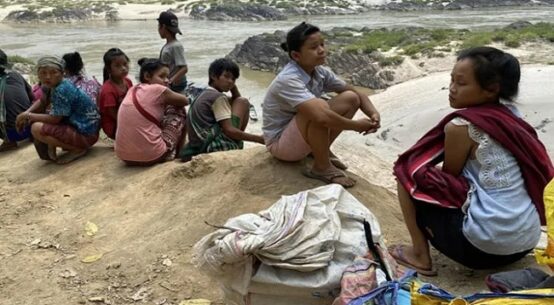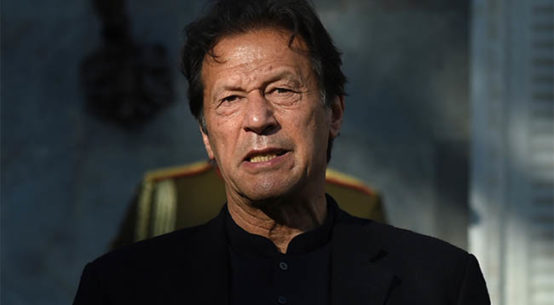
Just in the past few months, we’ve seen three concerning reports on children’s rights and how they are being affected by digital media and platforms. A piece by The Guardian, based on research done by Internet Watch Foundation, underscored that “the fastest increase in self-generated imagery was among the 7 to 10 age group” having surged by two-thirds over the six months in 2022.
Moreover, in July, Apple’s plan to use client-side scanning to detect child sexual abuse image material before it’s uploaded to the company’s image-sharing services faced backlash and was put on hold “indefinitely” despite support by several governments and child rights advocates.
The hate speech that people post on social media and the argument that such platforms have no legal responsibilities to flag and report such images to law enforcement came to further scrutiny in the aftermath of the Uvalde, Texas, mass school shooting that killed 21 people, most of whom were children, as the alleged assailant had posted his threats online.
Witnessing these recent developments, one could easily believe that the rights of the child in the context of digital media is operating in a legal vacuum. However, that could not be further from the truth.
The Convention on the Rights of the Child in the digital age
The Convention on the Rights of the Child dates back to 1989. The convention, a legal obligation extending to all 196 countries in the world — with the exception of the United States — is not a static document. It has relevance for relatively old as well as new child rights issues, including the internet.
In 2021, the United Nations Committee on the Rights of the Child, or CRC, adopted a general comment — a document that explains the specific obligations that states have under the convention.
The general comment covers multiple issues including the role of the private sector, the importance of having access to justice, remedies in the context of alleged violations, and the impact of commercial advertising and marketing on children. In respect of the latter, governments are requested to prohibit by law the targeting of children for commercial purposes on the basis of their digital activity.
In its efforts to protect children from the risks posed by the digital environment, the general comment undertakes a delicate balance to reconcile the tension between children’s participation and the protection of their rights in the digital environment. This is reflected in the right of access to information, the right to freedom of expression, as well as the discussions on children’s right to participate in the digital environment.
The right to be protected from violence in digital media is also explained by the general comment, as are the rights to health and education. In respect of the latter, governments are required to “ensure that digital literacy is taught in schools, as part of basic education curricula, from the preschool level and throughout all school years.”
Including children’s voices
Children were not consulted in the drafting of the convention. However, in line with Article 12 of the convention — the right of children to have their views considered in policies — the drafting of the general comment did incorporate child consultations from all corners of the world. These included inputs such as “… the Internet can help you [to] see something that brings you joy” or that children “can get information from all around the world” through digital technology are a reflection of how digital media is integrated in children’s lives.
In recognition of the important role that child-led groups play in the promotion and protection of children’s rights in the digital environment, they are recognized as one of the stakeholders that governments should systematically involve in the development and regulation of digital media.
However, for children to meaningfully benefit from the digital environment and participate in its development, access is critical. The general comment acknowledges this reality: “If digital inclusion is not achieved, existing inequalities are likely to increase, and new ones may arise.” In the context of education, governments are also asked to “invest equitably in technological infrastructure in schools and other learning settings.”
Narrowing the digital divide for children
COVID-19 has shed light on the digital gap that exists between the digital “haves” and the digital “have-nots.” In fact, in recognition of the educational, social, and economic opportunities that come with access to the internet, the former executive director of UNICEF Henrietta Fore has highlighted that so many children not having access to the internet is not “a digital gap” but rather a “digital canyon.”
Between the adoption of the general comment in February 2021 and August 2022, the CRC has reviewed reports around digital inequality from 21 countries. The issue of inequality in digital access has been flagged, for example, in the context of COVID-19 in Eswatini and Djibouti — and both countries have been asked to address inequalities around online schooling, especially for children in rural areas and children with disabilities.
As for the other countries, protection from violence and online safety seems to dominate reviews. For example, recommendations were issued to Luxembourg, Poland, and the Netherlands to prevent and address all forms of violence against children, including measures against bullying and online violence.
Switzerland was asked to develop regulations and safeguarding policies to protect children’s right to privacy. Iceland, Cambodia, Switzerland, and Cuba received recommendations to improve the digital literacy of children and parents; and the Czech Republic to fight disinformation and “fake news.” These recommendations are important, but should also look at the digital divide and its implications on children in vulnerable situations. For example, children with disabilities in Cambodia or Roma children in Poland.
Geographical inequalities also often capture the attention of the CRC, for example, for children in rural areas in Guatemala and Argentina. The implementation of the general comment demands nothing less than paying particular attention to rural settings.
However, the general comment is not a silver bullet. In fact, it should be viewed as the first consolidated but evolving attempt to give guidance to states on their obligations with respect to the rights of children in the digital space.
For countries that lack the necessary financial and technical capacity to bridge the digital divide, the convention envisages that international aid should play an important role. On the occasion of the 25th anniversary of the convention, a publication from UNICEF answered the question “‘does a child born today have better prospects in life than one who was born in 1989?’ by saying ‘yes, but not every child!’” We must pay more attention to the children who are getting left behind by the digital divide if we are indeed serious about the Sustainable Development Goals and ensuring no child is left behind.
Visit the Generation Why series for more coverage on how we can ensure the digital space advances the rights of all young people and leaves no one behind. You can join the conversation using the hashtags #DevexSeries on #DigitalRights.
Benyam Dawit Mezmur is currently Eleanor Roosevelt Fellow at the Harvard Law School human rights program. He is a professor of law at the University of the Western Cape in Cape Town, South Africa. Since 2012, he is serving on the United Nations Committee on the Rights of the Child and served as its chairperson from 2015-2017.


